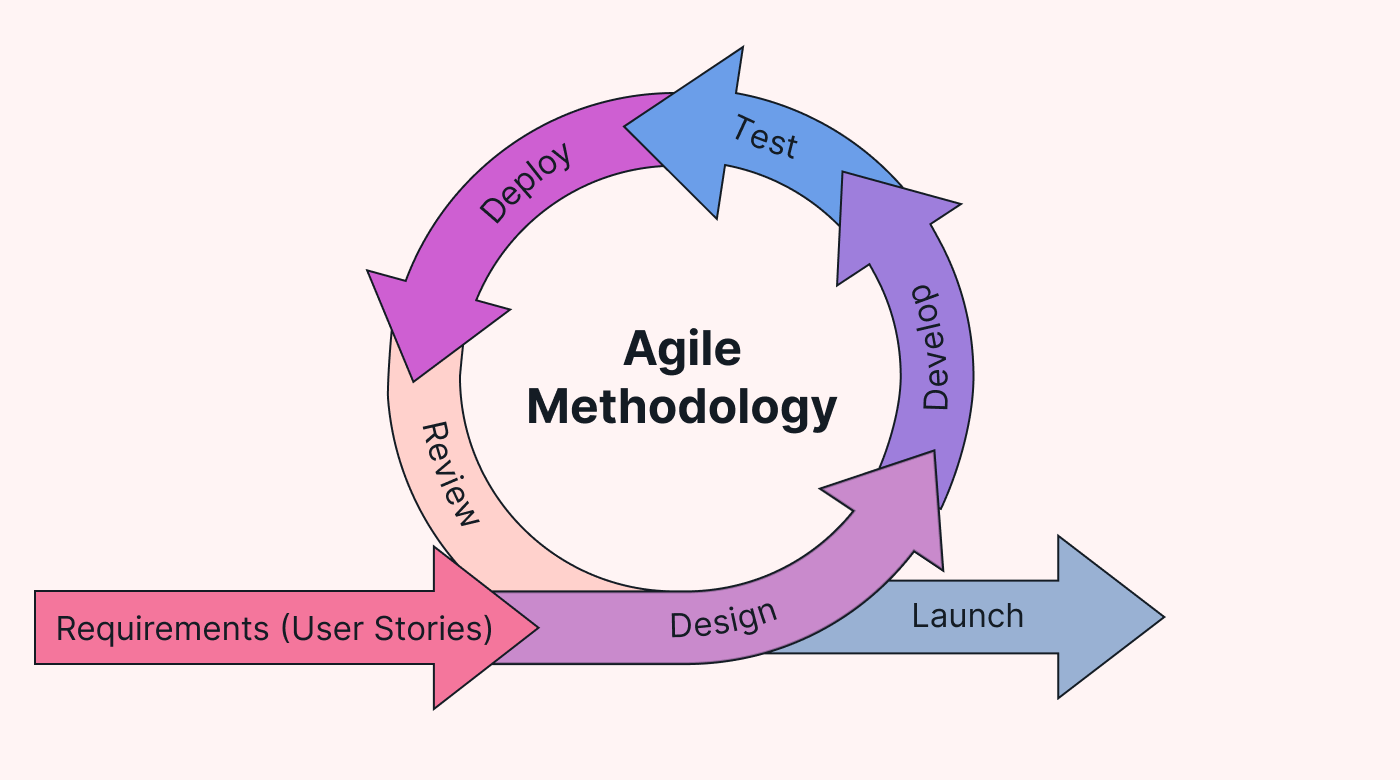
The Role of Agile Methodology in Application Development Support
By Udit Agarwal

In the ever-evolving landscape of technology, where innovation is the heartbeat of progress, the Agile methodology stands as a cornerstone in application development support. Agile has revolutionized software development and has become a driving force in enhancing the efficiency and adaptability of ongoing support and maintenance processes.
Understanding Agile Methodology:
Agile is more than just a development framework; it’s a mindset that fosters collaboration, flexibility, and continuous improvement. Unlike traditional waterfall methodologies, Agile is iterative and incremental, allowing development teams to respond swiftly to changing requirements and customer feedback.
Agile in Application Development Support:
1. Adaptive Planning:
In application development support, requirements are dynamic, and changes are inevitable. Agile embraces this reality through adaptive planning. Agile teams plan for short development cycles called iterations, allowing for regular reassessment and adaptation of project goals and deliverables.
2. Flexibility and Responsiveness:
One of Agile’s core principles is its ability to respond to change by following a plan. In application support, issues or enhancements may arise unexpectedly. Agile methodologies empower teams to adapt to these changes quickly and efficiently, ensuring that the support process remains responsive to evolving needs.
3. Iterative Development:
Agile divides the development process into small, manageable iterations. This iterative approach allows development and support teams to release functional updates regularly. Users benefit from incremental improvements, and issues can be addressed promptly, contributing to a more stable and user-friendly application.
4. Continuous Collaboration:
Agile emphasizes constant collaboration between development and support teams. Regular stand-up meetings, sprint reviews, and retrospectives ensure everyone involved in the support process is aligned on goals and challenges. This collaborative environment enhances communication, reduces silos, and leads to faster issue resolution.
Benefits of Agile Methodology in Application Support:
1. Faster Issue Resolution:
Agile’s iterative approach ensures issues are identified and addressed in shorter cycles. This not only accelerates the support process but also allows for quicker delivery of solutions to end-users.
2. Enhanced User Satisfaction:
By incorporating user feedback into each iteration, Agile ensures that the application evolves to meet user expectations continually. This ongoing responsiveness leads to higher user satisfaction and loyalty.
3. Improved Team Productivity:
The Agile framework promotes a self-organizing, cross-functional team structure. This enables team members to take ownership of their work, collaborate seamlessly, and collectively contribute to the success of the application support process.
4. Reduced Risks:
Agile’s focus on adaptive planning and iterative development reduces the risk of large-scale failures. Continuous testing and regular feedback loops help identify potential issues early, minimizing the impact on ongoing support activities.
5. Cost-Effective:
Agile’s incremental approach allows organizations to prioritize and address critical issues first. This results in cost-effective development and support, as resources are allocated efficiently based on the application’s and its users’ immediate needs.

Implementing Agile in Application Support:
1. Define Clear Objectives:
Establishing clear objectives and defining the scope of application support is crucial. Determine the key performance indicators (KPIs) that align with the goals of both the support team and the end-users.
2. Build Cross-Functional Teams:
Form cross-functional teams that include individuals with diverse skills relevant to application support. Encourage collaboration and ensure that team members comprehensively understand the entire support process.
3. Adopt Agile Practices:
Implement Agile practices such as Scrum or Kanban, tailored to the specific needs of application support. Define short, focused iterations, conduct regular reviews, and encourage continuous improvement through retrospectives.
4. Prioritize User Feedback:
Create mechanisms to gather and prioritize user feedback. Actively involve end-users in the support process, promptly addressing their needs and concerns.
5. Invest in Training and Tools:
Equip your support team with the necessary training and tools to implement Agile successfully. This may include Agile project management tools, collaboration platforms, and training programs to enhance Agile understanding and adoption.
Challenges and Considerations:
While Agile offers numerous advantages, its successful implementation in application support is challenging. Organizations must address issues such as resistance to change, cultural shifts, and the need for ongoing training to ensure that teams fully embrace Agile principles.
Conclusion:
In application development support, where change is constant and user satisfaction is paramount, the Agile methodology shines as a guiding light. Its adaptive planning, iterative development, and continuous collaboration empower support teams to navigate the complexities of application maintenance with agility and efficiency. By embracing the Agile mindset, organizations can streamline their support processes and cultivate a culture of resilience, innovation, and continuous improvement in the dynamic world of technology.